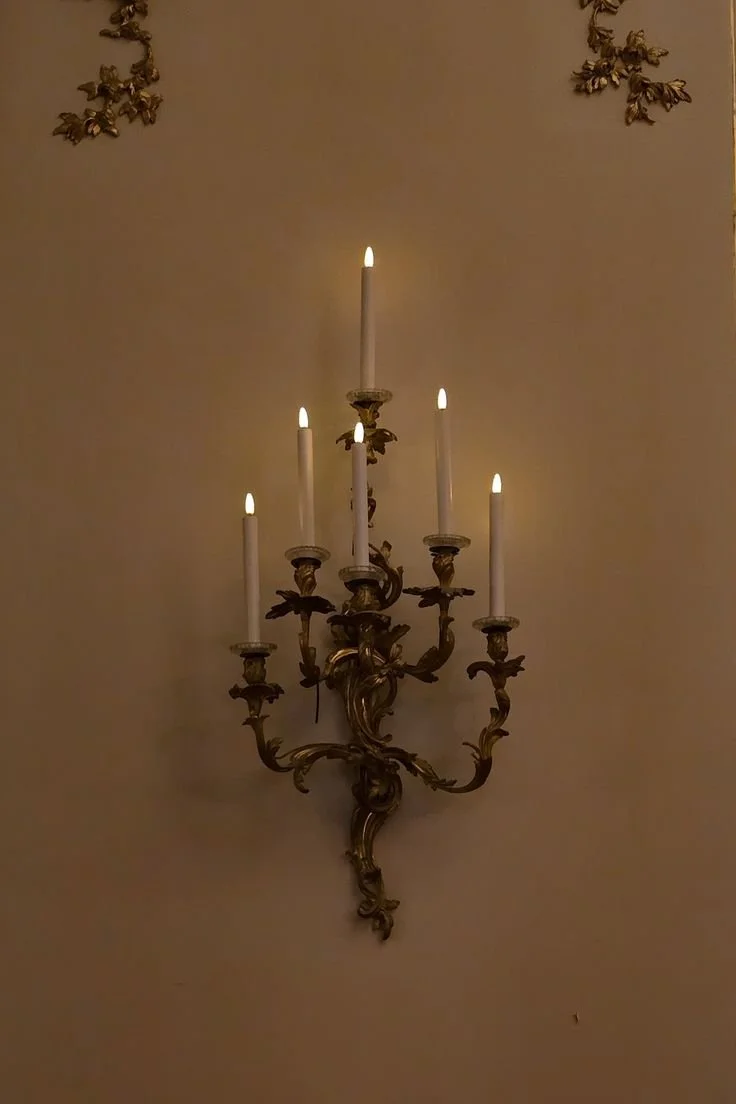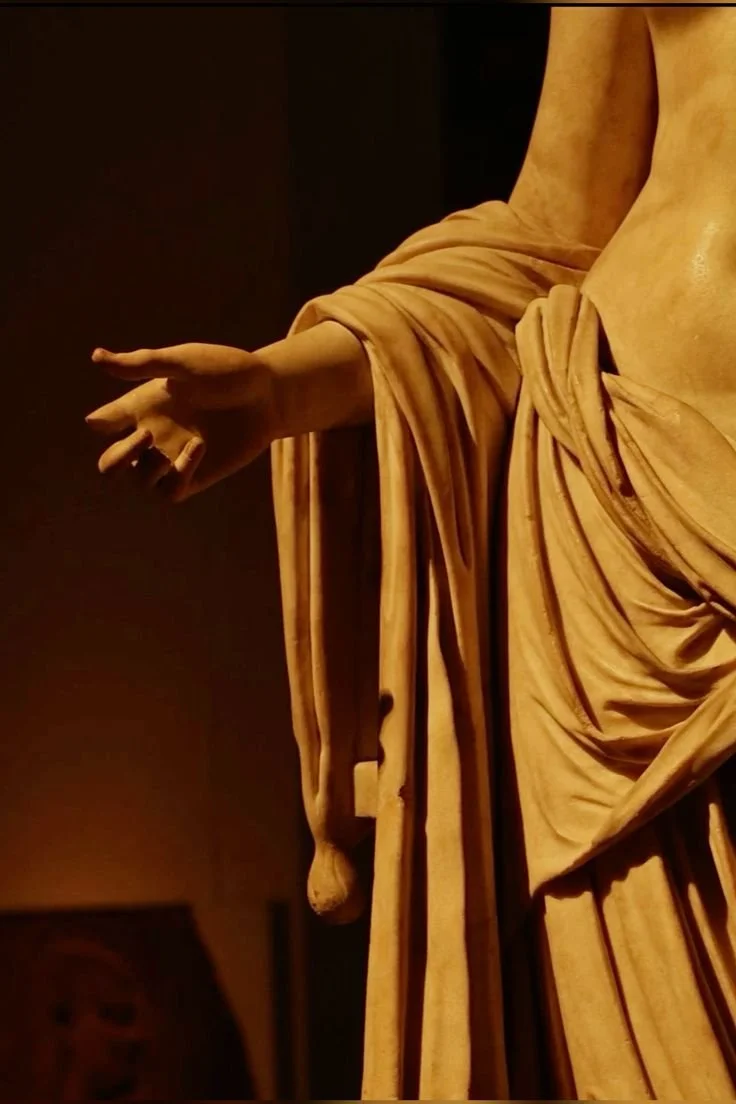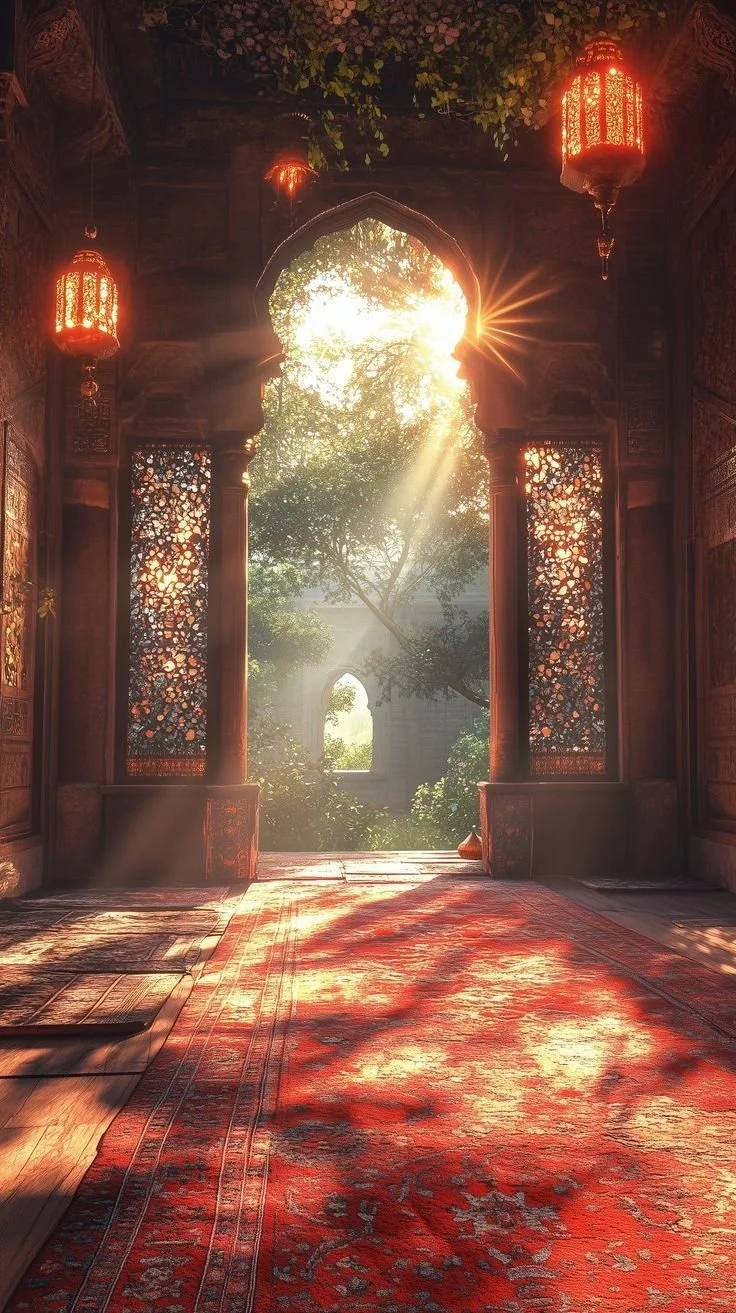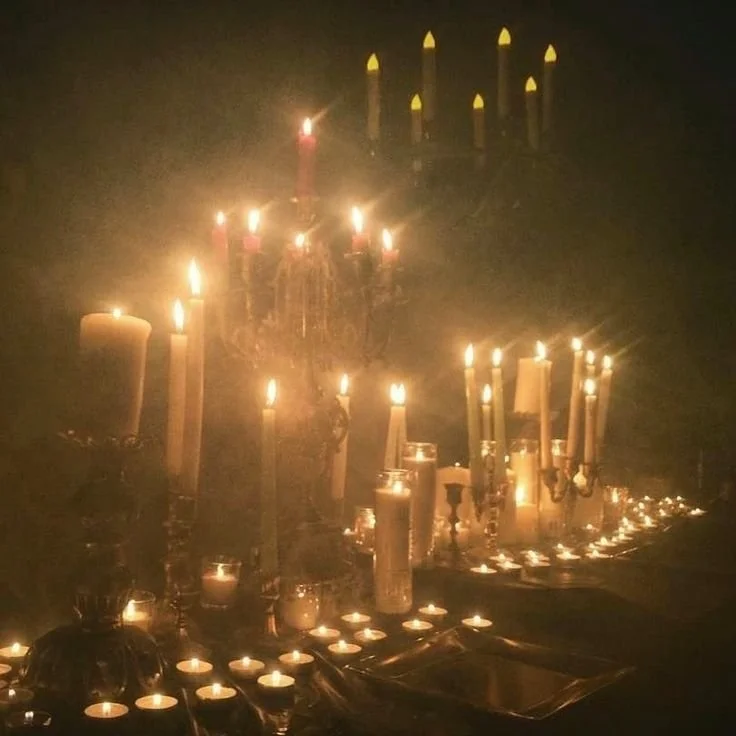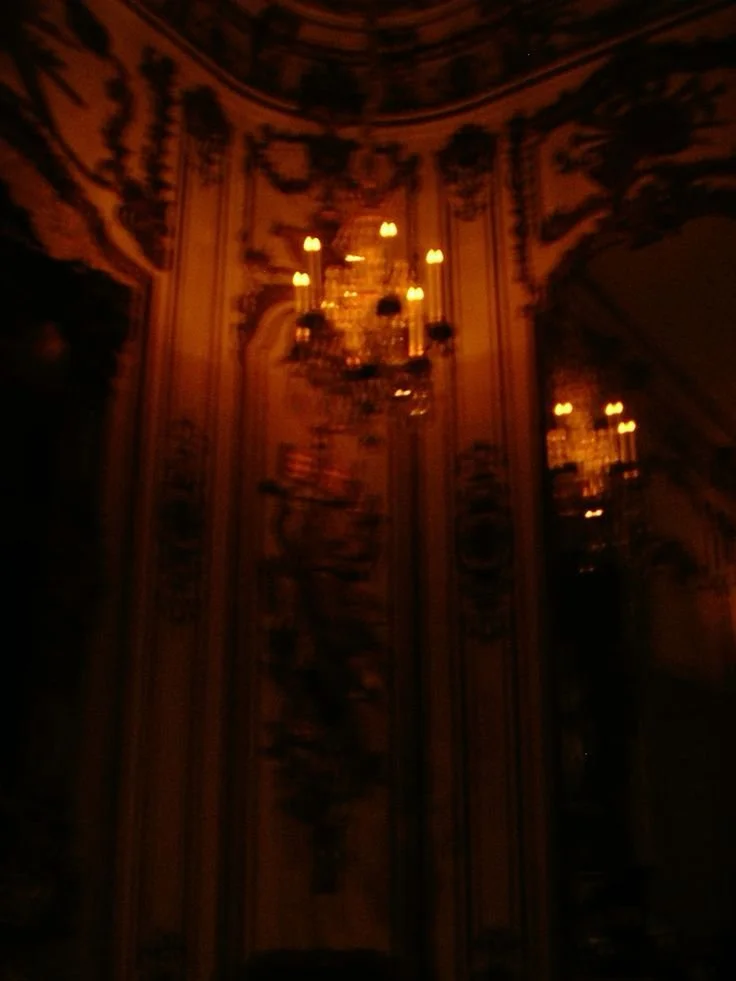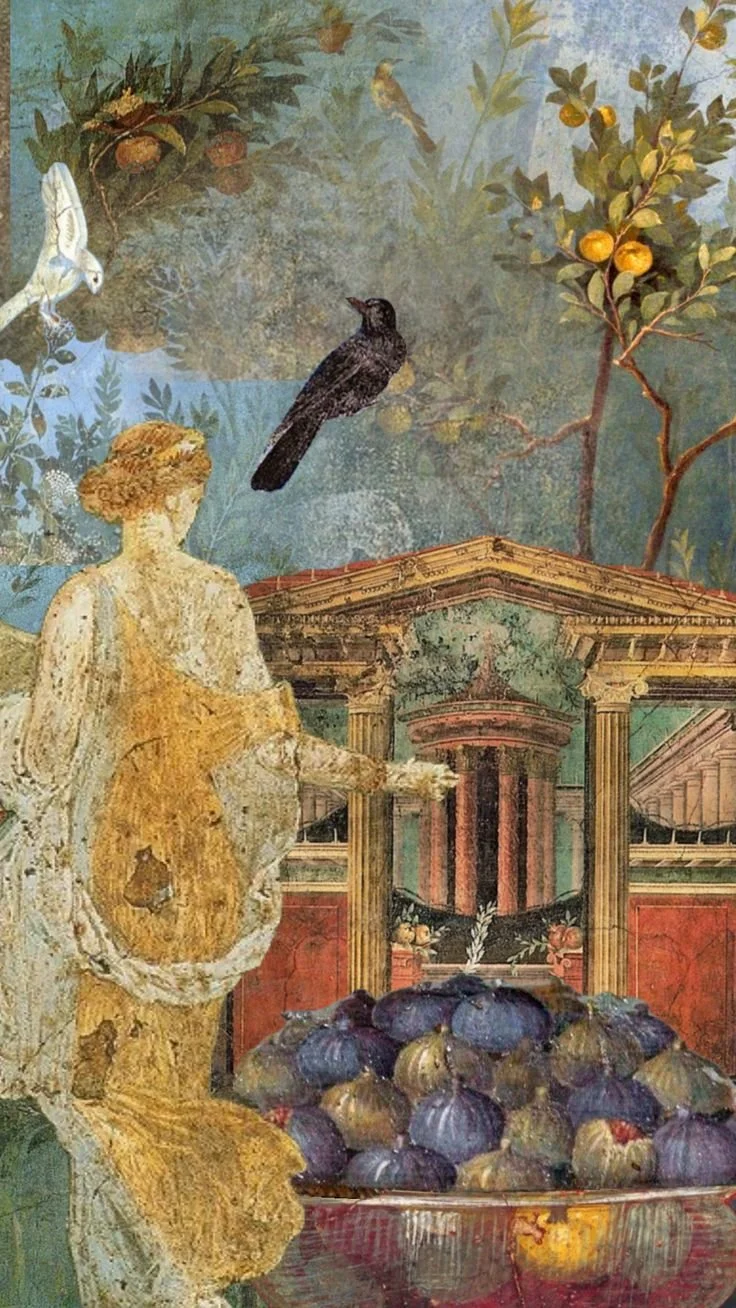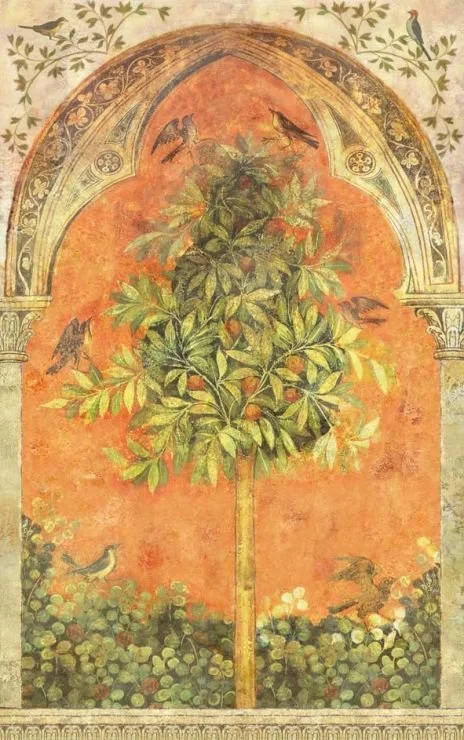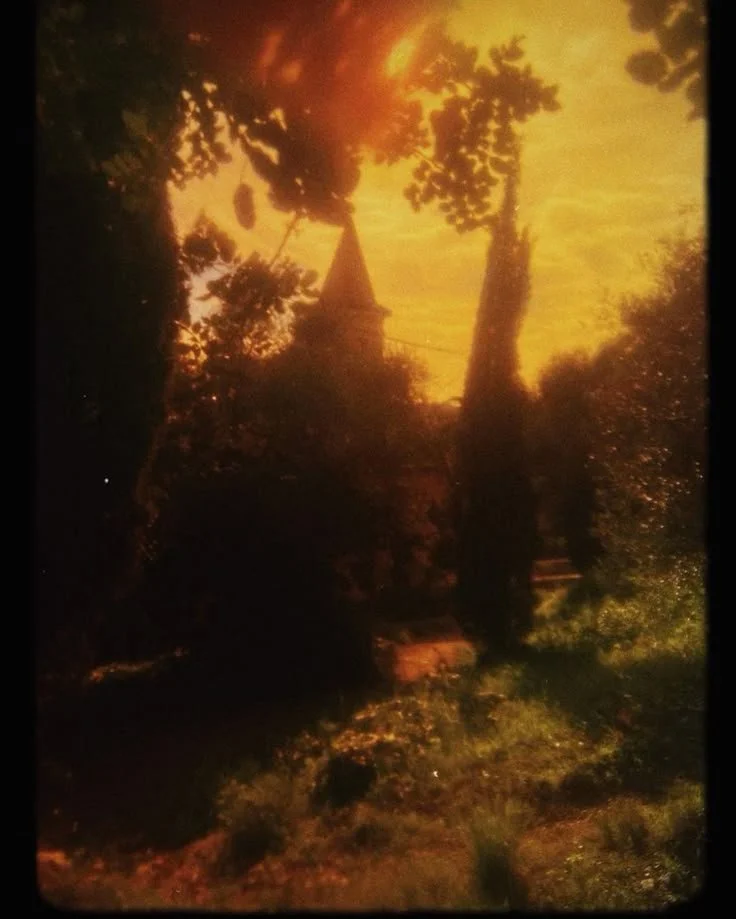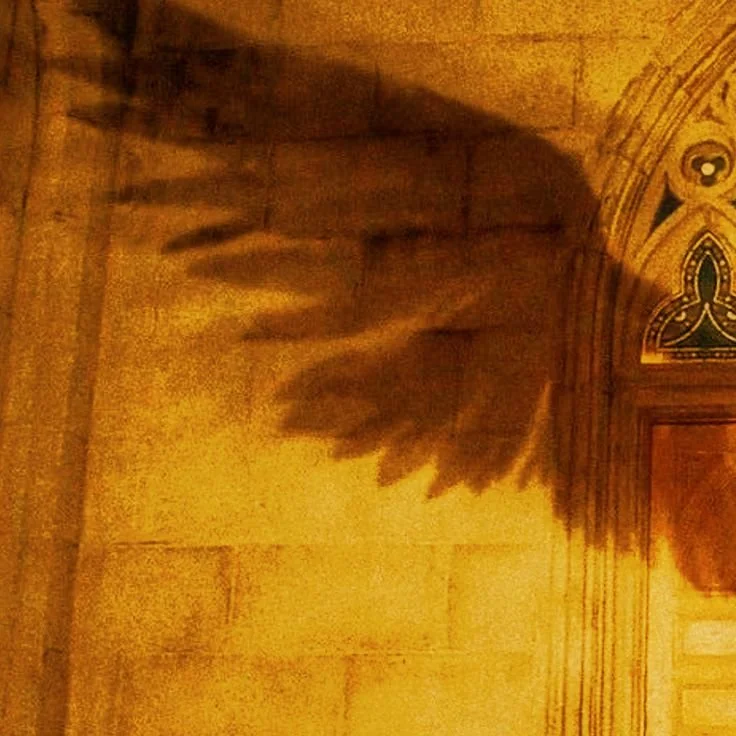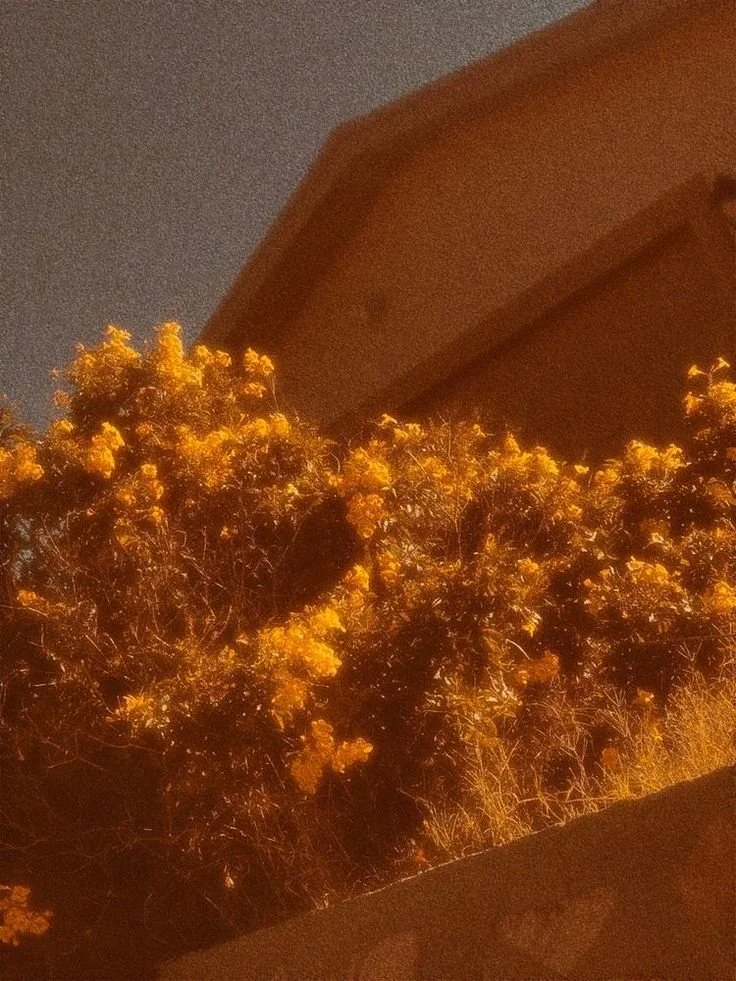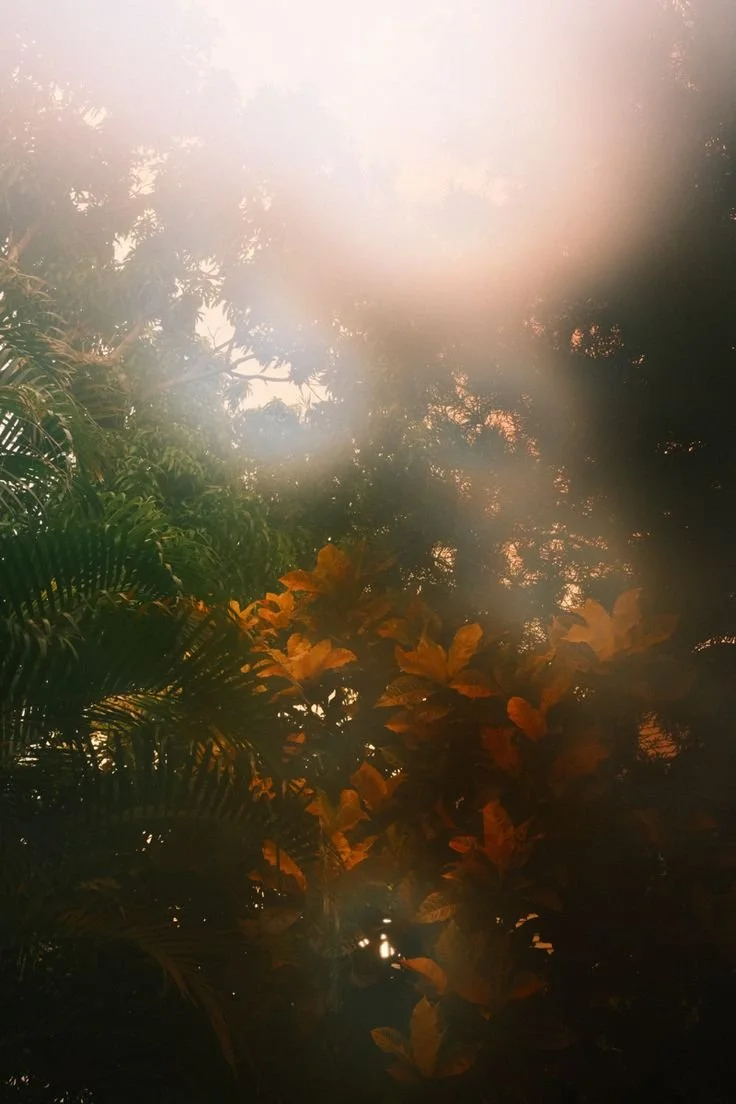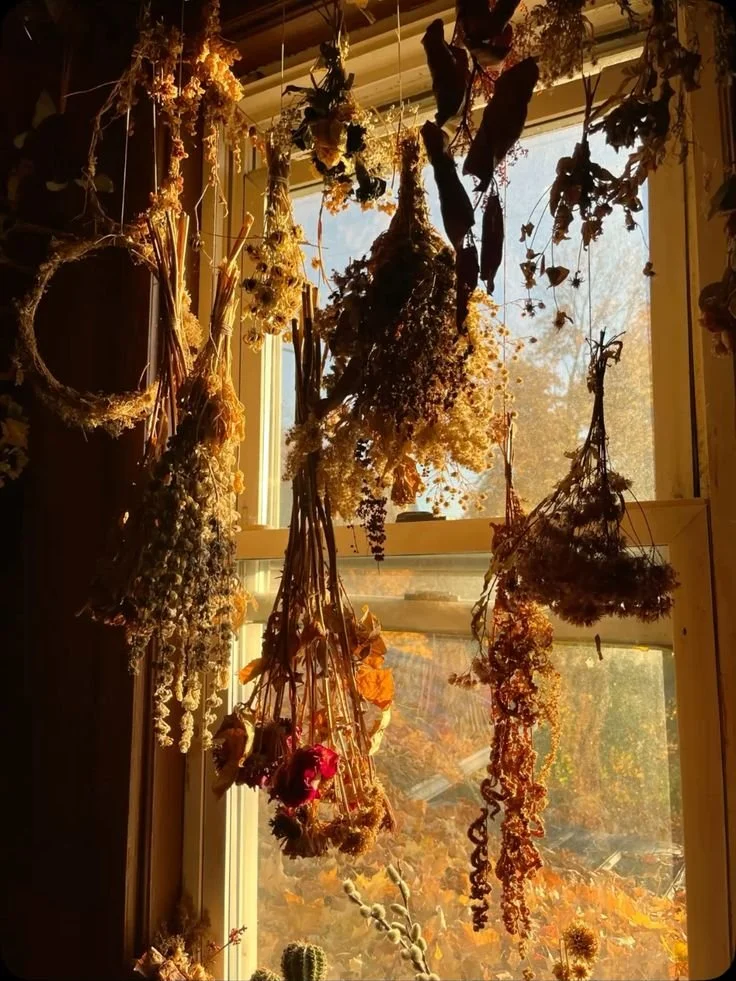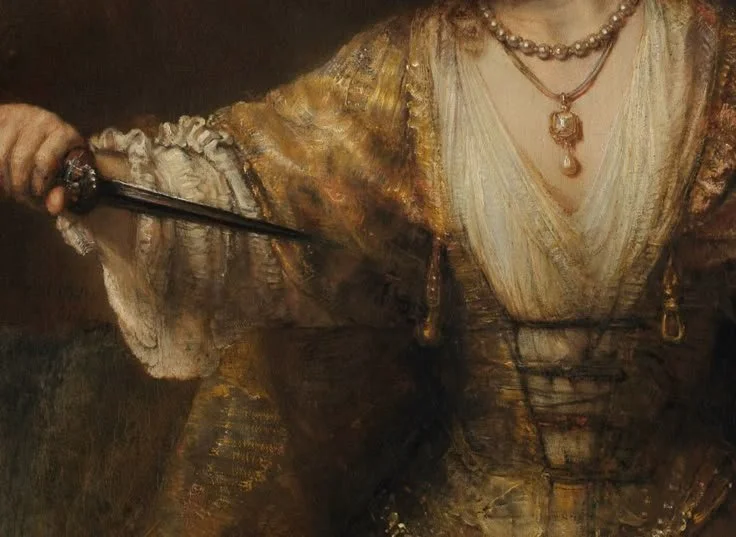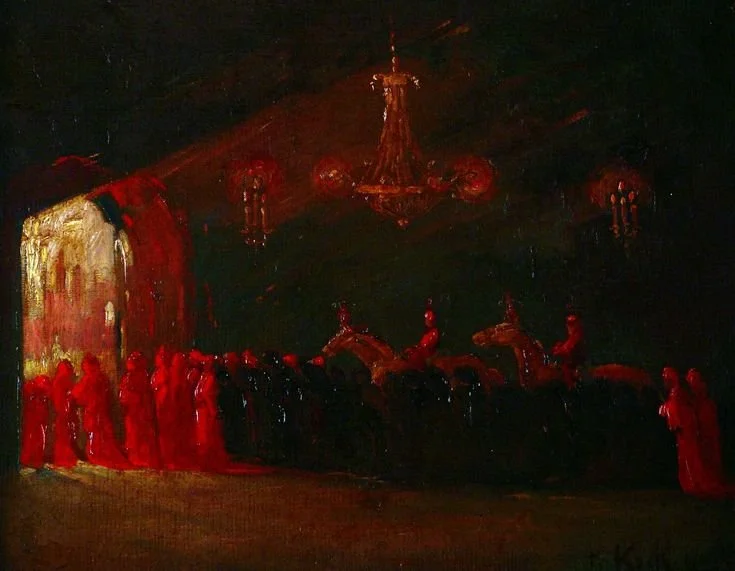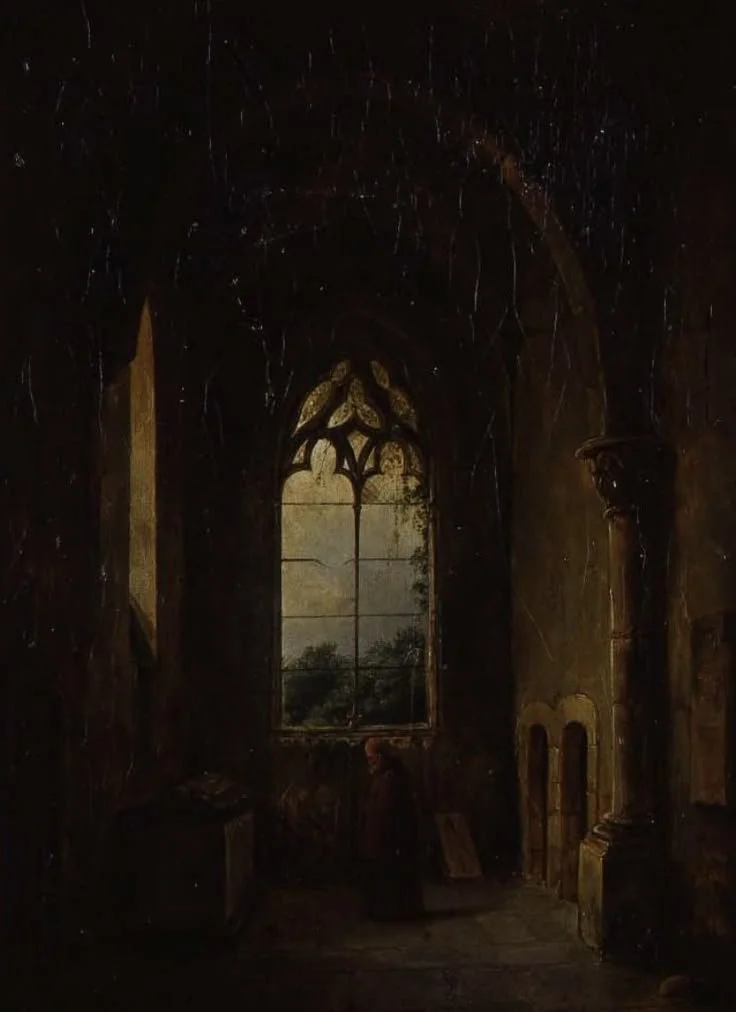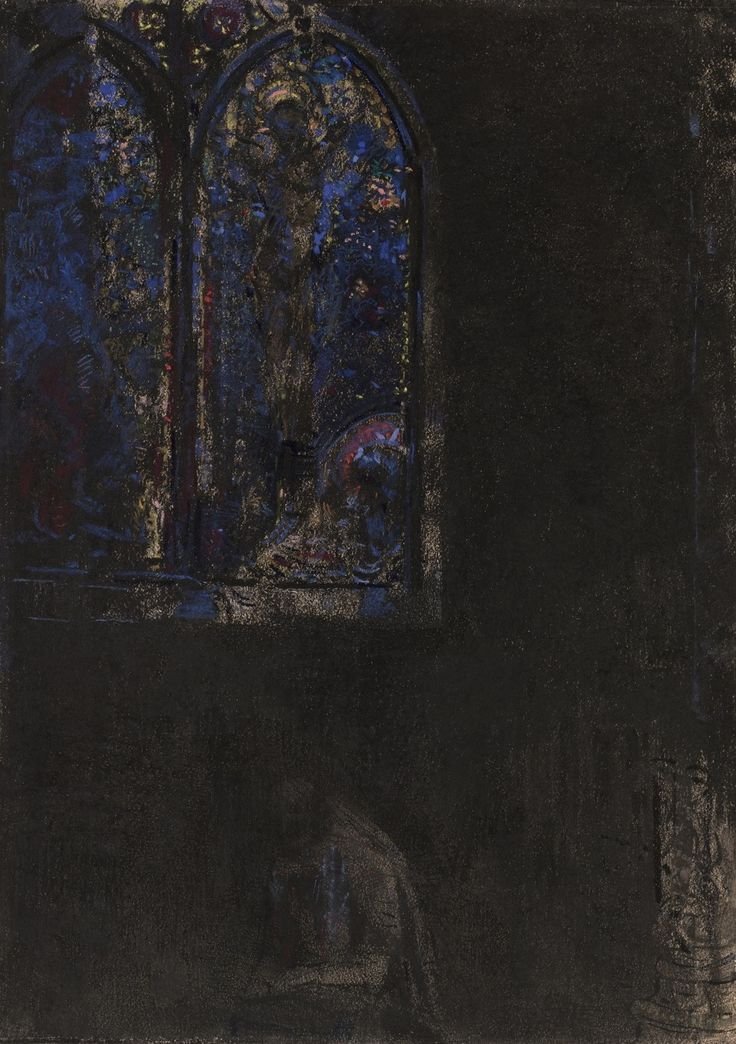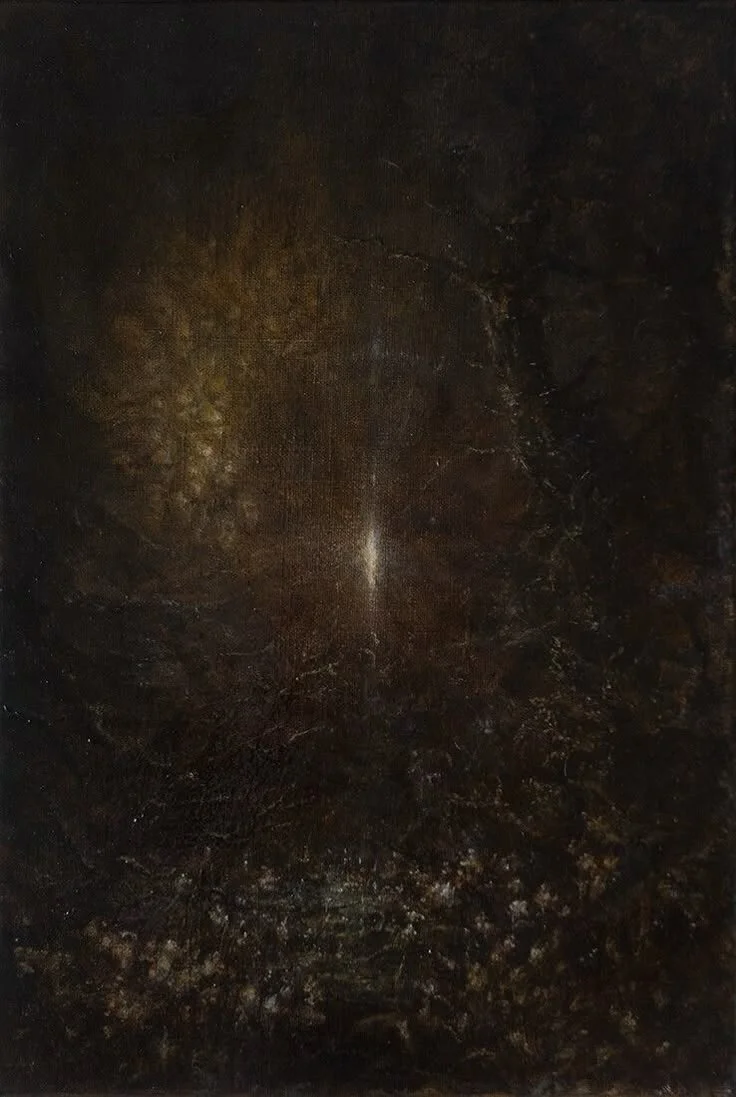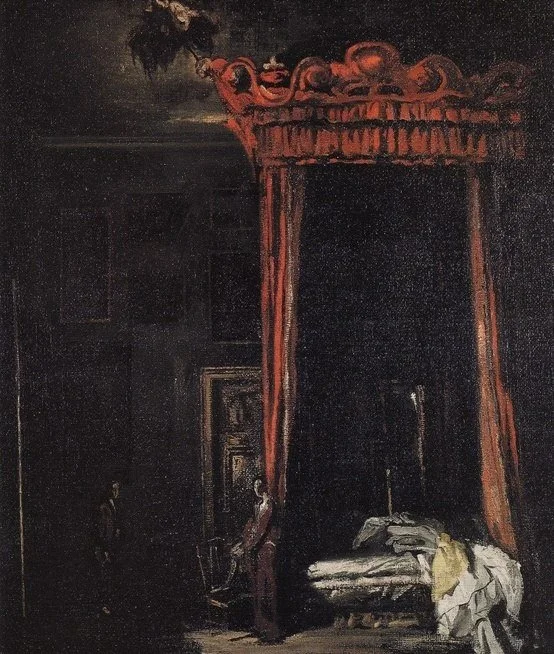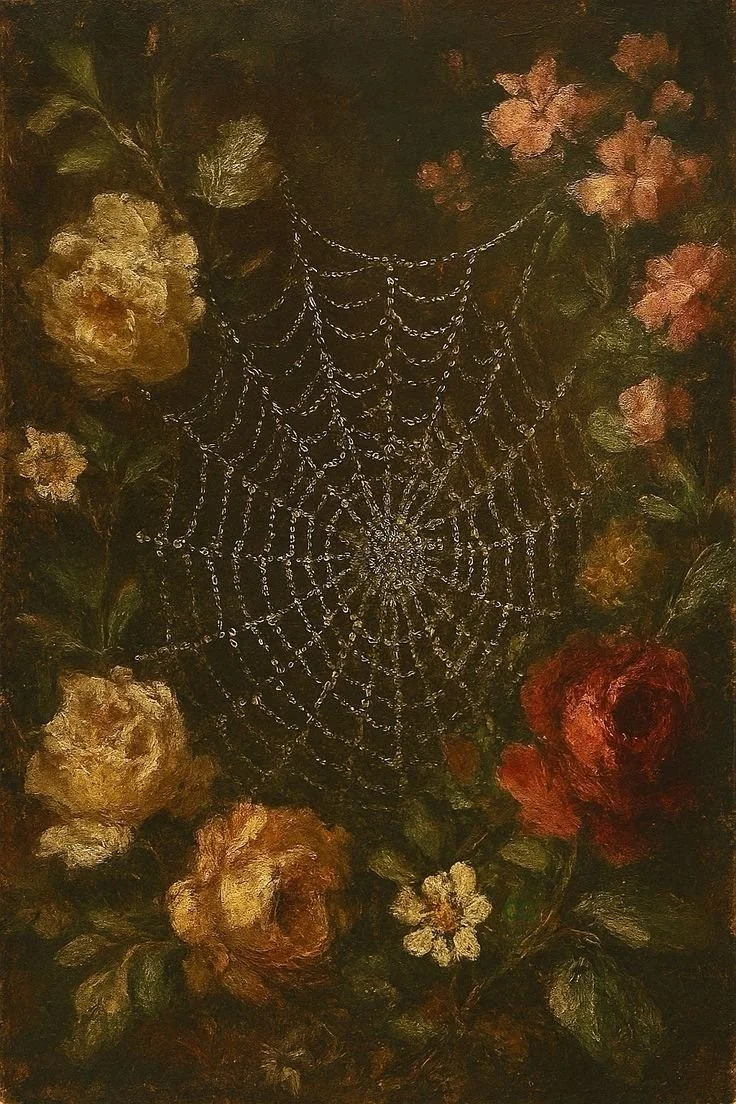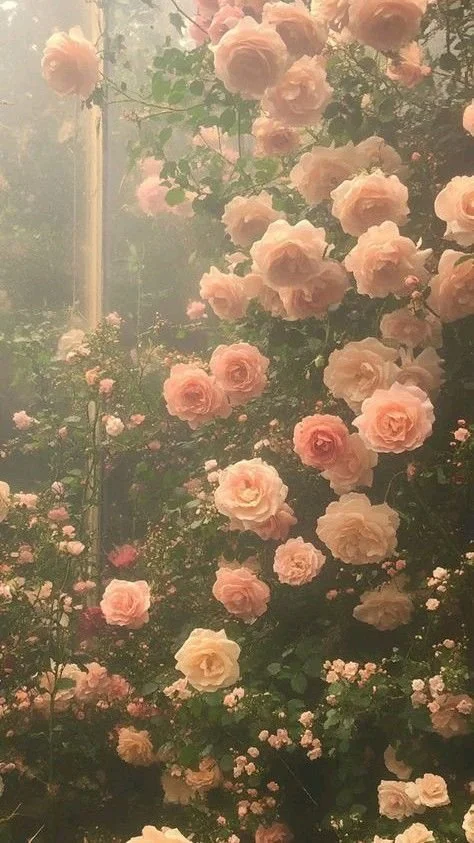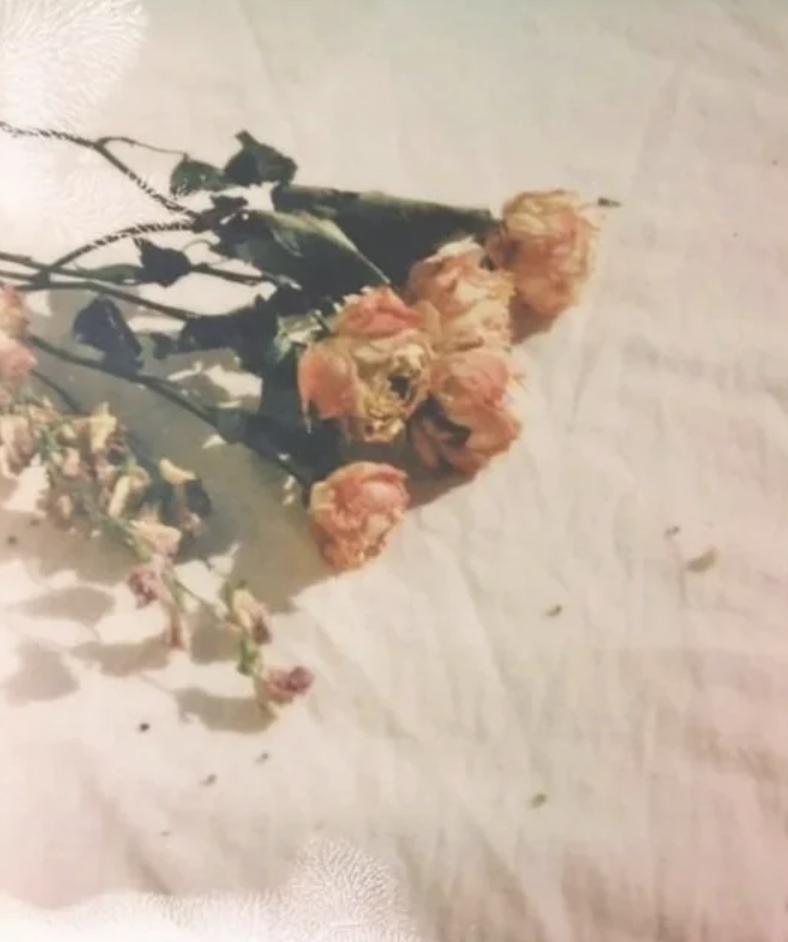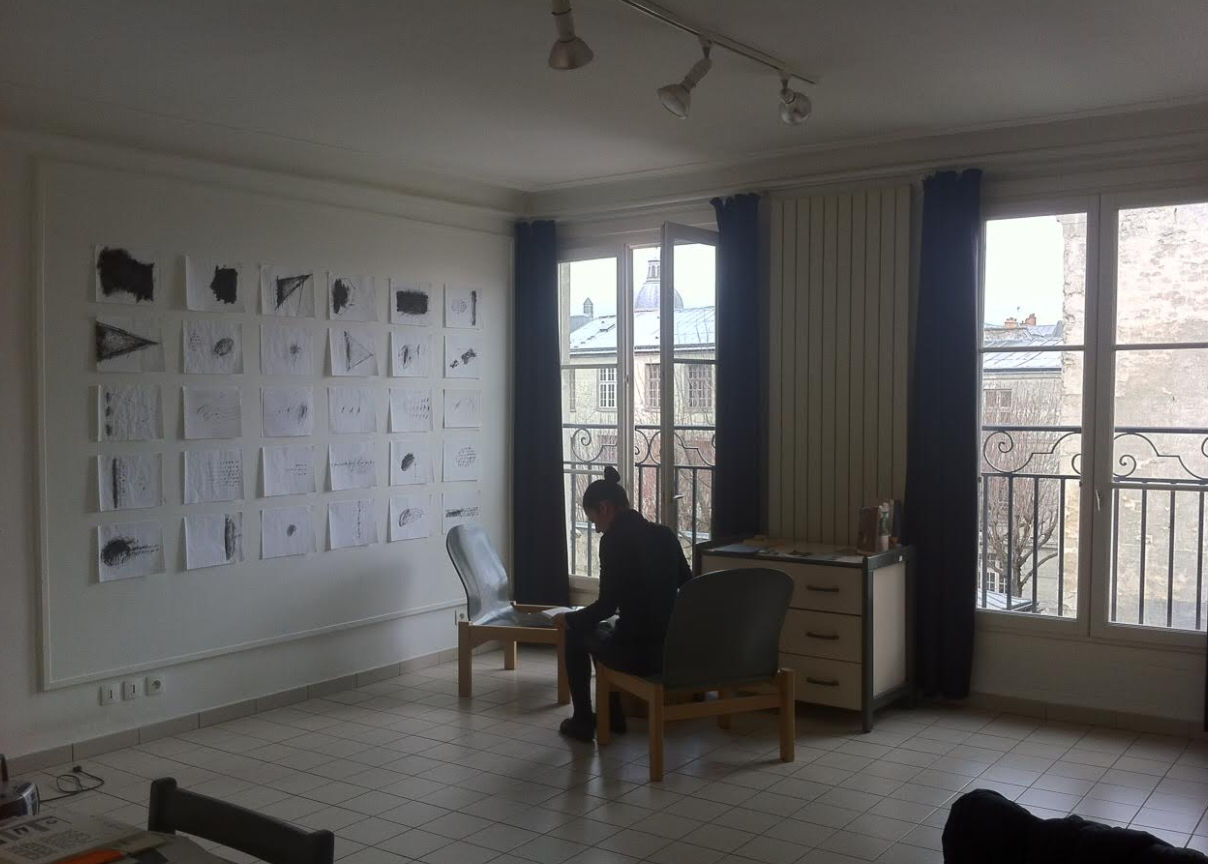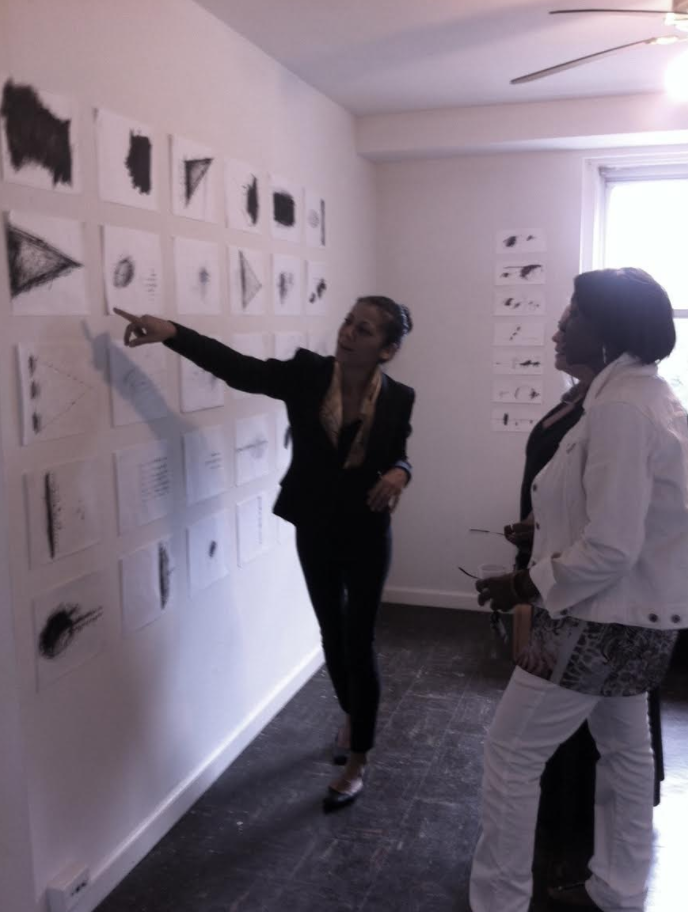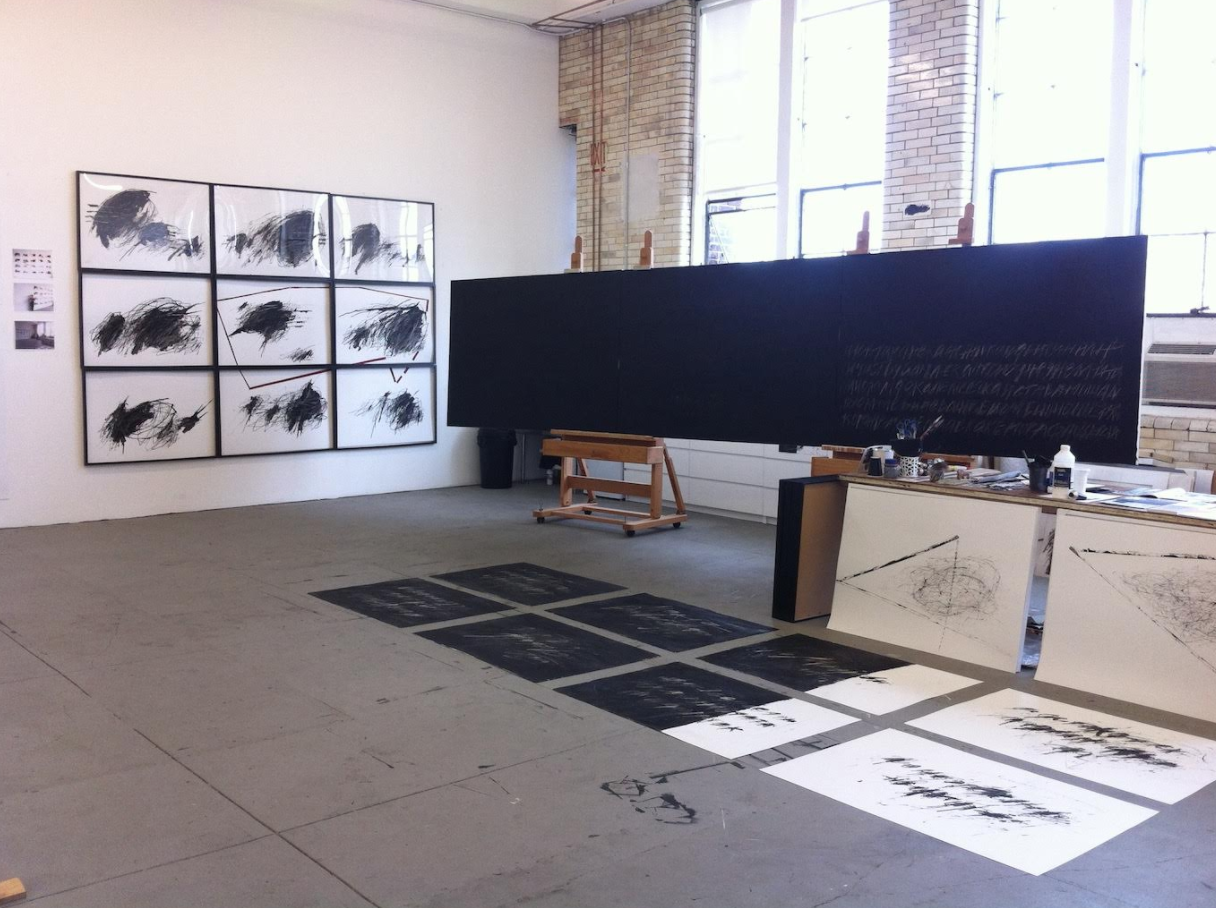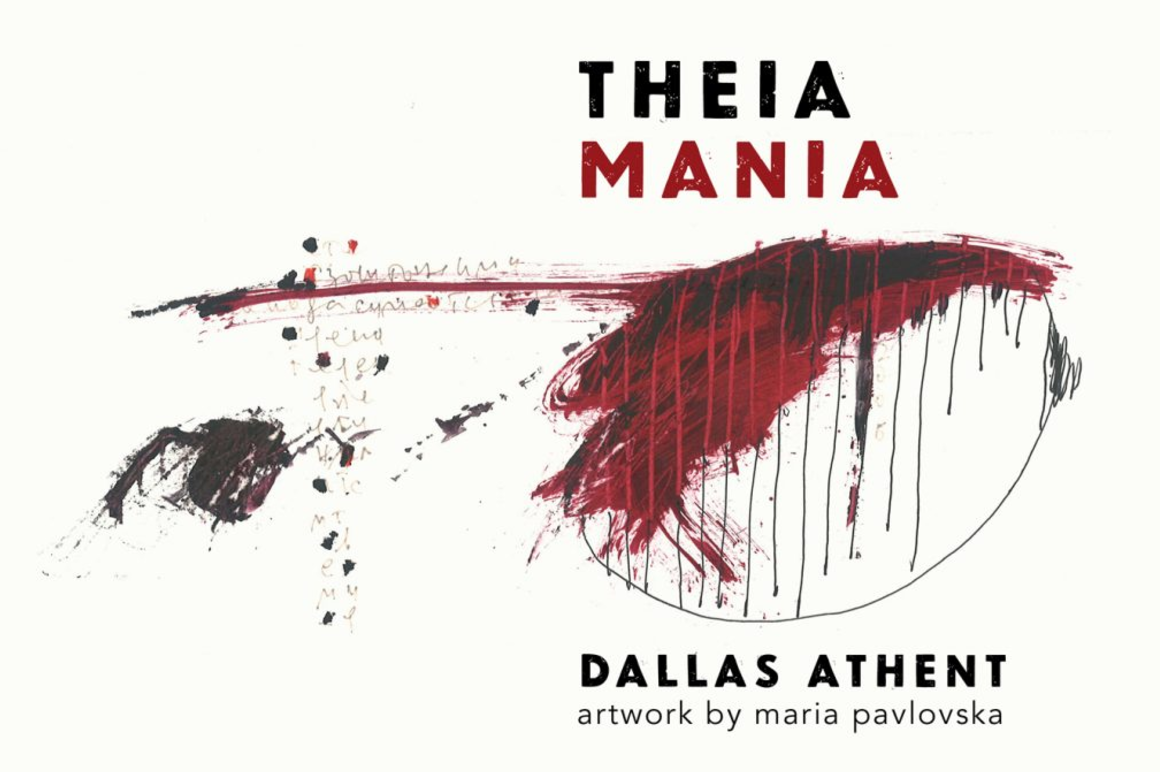Joanna C. Valente is an alien from Saturn’s rings. They have written, illustrated, and edited a few books. Sometimes they take photos and bake ugly desserts.
Theia Mania: In Conversation With Dallas Athent & Maria Pavlovska
BY LISA MARIE BASILE
Editor's Note: Theia Mania is a book of poetry by Dallas Athent with illustrations by Maria Pavlovska (Black Square Editions). This book is fiercely feminine, self-empowered, loud, brash, beautiful, and filled with references to gods and the Divine. Here. I interviewed Dallas and Maria about their collaboration and their work.
INTERVIEW WITH DALLAS ATHENT
LISA MARIE BASILE: Ah, the binary. I am addicted to it and your work explores it so well. It's bikinis versus god and bars versus transcendence and the problematic versus self-empowerment. Except here, the light always seems to win. Was that a conscious choice?
DALLAS ATHENT: I used to believe in good and evil. After my studies ofThe Golden Dawn and Platonic elements, I began believing instead in light and dark. Light elements are things that are connected to the divine, the higher powers, spirituality. Dark matter is that which makes us mortal. It's what drives us to be gluttons. This book is really a study of both states. Light doesn't always win because it is "good," per say, it wins because making art is a struggle for our dark matter to be connected to higher powers.
LISA MARIE BASILE: There's not a lot of subversion here, although on first read I thought there was. I think you're screaming, HEAR ME. And I love it. I don't see a lot of work that encounters radical self strength with such bravado. Tell me, were there weaknesses and fears and vulnerabilities you grappled with while writing this?
DALLAS ATHENT: At one point during this I was laid off from my job the same week I was closing on my apartment. It was a hard week for me and that's where on the one hand I was celebrating an accomplishment, but it felt fake, not knowing if I could really afford this thing I had been working towards. A lot of the darker poems were written during that week, and the ones that are more about me feeling like I can do anything were written when I got myself out of the hole.
LISA MARIE BASILE: So, you keep mentioning England. How did England shape you IRL?
DALLAS ATHENT: I love England. I lived there for a short while and I'm always trying to move back. I adore pub culture. A lot of my friends talk about wanting to visit warm places, and how beautiful beaches are, but for me the most natural state is in the corner of a pub on a rainy day with a book and a pint.
LISA MARIE BASILE: You say, "the purpose of art is horror," and I think that's fucking magic. I agree, but I haven't seen it put so succinctly. Tell me about this idea. Did you aim to horrify?
DALLAS ATHENT: The poem that's taken from is about making art, and trying to leave a mark through doing so. That being the last line was just me thinking of how hard we try and end up nowhere. It's like a beautiful nightmare.
LISA MARIE BASILE: I feel like this book is like if contemporary feminist discourse had a baby with the baddest, most rebellious, most sassy Lana Del Rey video ever. It's all girls and alcohol and scum and the body, but it's elevated with these ideas of divinity and Theia and the powerful feminine. How do you approach talking about BIG IDEAS in such an aesthetic way? I know when I was writing Apocryphal, I wanted this landscape of cars and deserts and fabrics and gardens and beaches and fires and tropics, but at the end of it, that was a character all meant to juxtapose the grandiose shit. What about you? Was this landscape and aesthetic conscious or not? Or was it just, "I love these things. They're real to me?"
DALLAS ATHENT: That's a great question. And I actually feel the same way about Apocryphal. You managed to create this classic, desperate, suburban summer on a coast feel — but used that landscape to illustrate what it's like being a young woman.
For Theia Mania, I've always loved cities and lived in cities. I'm obsessed with places where there's so many people and they all live so close to each other but don't actually know each other and have such drastically different lives. I just like how that contributes to the concept of trying to make art to be someone. It's a constant reminder that we will fade into the fabric of the earth no matter how well known we are.
LISA MARIE BASILE: (Thanks, Dallas). I've heard you talk about Yeats before. You write, "there is an oppressive veil separating us from the stars and Yeats." Can you tell me more?
DALLAS ATHENT: A while ago I read this essay titled the The Gnostics by Jacques Lacarriere. What I got from it was that the Gnostics believed there was a veil that separated us from all that is holy and divine, and that's why mortality is always doomed. Because we're always trying to see everything behind the veil but can never possibly. Yeats, being everyone's favorite Golden Dawn member, and a true inspiration to me, seems to have been someone who has achieved crossing the veil. It was a little line to give him a nod.
LISA MARIE BASILE: What does Theia mean to you?
DALLAS ATHENT: Theia Mania is a Platonic theory about how people who are experiencing horrible things, like heartbreak, are brought closer to the divine in those moments, and that's why we make great art. That state is really what the book is about, along with the dualities of being mortal and immoral, and trying to leave a mark on the world. That's how it got its title.
INTERVIEW WITH ARTIST MARIA PAVLOVSKA
LISA MARIE BASILE: Your pictures evoke chaos, but they seem finely, painstakingly deliberate. I'd love to learn about how you approached these works for this book.
MARIA PAVLOVSKA: There is a series of 30 drawings, which was one piece related to each other from the first one to the 30th. Altogether it is one story. They are not meant to be viewed individually, but as a collection. They were originally conceived as part of a show "Black and White Diaries," which included also large canvasses. I wanted to show, as I always do, the progression from drawing to painting.
LISA MARIE BASILE: Something I realized about this book is that there really is a balance between the good/bad or holy/not holy polarity. In your work, I sense that you contributed in a big way to that feeling. I find it very hard to strike a balance; how do you, as an artist, find that median?
MARIA PAVLOVSKA: My work translates topics of choice into pictorial language that demonstrate a quietly powerful eloquence. My drawings and paintings reflect painting as a battlefield, where light and darkness fight and the result is unpredictable.
One sees the lightning bolts of ideas at work, as they are being worked out. That is the balance I look for. This sort of simultaneous image /process / results in a dialectic that lies frozen in space, stimulating the viewer to actively participate in the image creation themselves by way of investigation, inviting myriad readings within a given theme.
LISA MARIE BASILE: You're from Macedonia. What about the culture inspires your work? Is there something you're bringing to your work — and Dallas' poetry — that is related to Macedonia in some way?
MARIA PAVLOVSKA: My inspiration does not specifically reflect my Macedonian heritage. I draw inspiration from who I am and how I see the world, in me and around me, and this is more of a global perspective. The people that see my work, whether they are in Berlin, Vienna, Belgrade, Paris or NYC derive this universal feeling from the art as unique.
LISA MARIE BASILE: What does Theia mean to you? Who is she in your work?
MARIA PAVLOVSKA: In my work, the contrast between light and dark, shadow and brightness, is evident. Theia, the Titaness, has several distinctions: brightness, uprightness, belief. Theia is a good omen.
LISA MARIE BASILE: Each of the works in this book feel like they're unraveling to some sort of secret that I finally learn. Can you tell me a secret?
MARIA PAVLOVSKA: As the viewer can notice, there is a lot of writing in my work. You cannot really make out the words or read it, as it's not a poem or a thought that needs to be read. I need to write inside during my work as the thoughts are coming from me, and i'ts part of the composition. In the end it is part of the piece. So in that sense, it is a kind of secret (obvious secret).
LISA MARIE BASILE: How do you make art from literature, like this? Is it a translation? Or a collaboration?
MARIA PAVLOVSKA: It is a collaboration as Dallas in one of her visits to the studio noticed the drawings realizing that they relate to her poems, and they seem to compliment each other. The drawings already existed, they were not created for the book, but, they seemed to fit with her poems perfectly (what I draw and explain with the lines, she writes and explains with words). We commented that my work would work well with her poems and that we could create this remarkable, new book Theia Mania.
Note: The images above were part of Pavlovska's Black & White Diaries concept. They were developed in a two-month residency studio Pavlovska won in 2014 at Cite Des Arts in Paris. The works were displayed at DRAWING ROOMS Gallery in New York City at the group show "Automatic - Systematic" in May 2014 and then shown at MANA CONTEMPORARY Open House in January 2015.
RELATED: 6 Incredible Pieces of Art We Saw at Mana Contemporary’s Open House
Dallas Athent is an art reviewer for At Large Magazine, a board member of Nomadic Press and the editor of the short story collection, Bushwick Nightz. Her writing has appeared in Buzzfeed Community, PACKET Bi-Weekly, PANK Magazine, VIDA Reports from the Field, BUST Magazine, Yes Poetry & more. She has been an editor for Bushwick Daily and Luna Luna Magazine. Her work has been profiled in Bedford + Bowery of New York Magazine, Brooklyn Based, Brooklyn Magazine, Papermag among others.
Maria Pavlovska was born in Skopje, Macedonia (Former Yugoslavia) in 1975. BA and MA she receved at the Faculty of Fine Art in Skopje, Macedonia. Her work has been featured around the globe in over 28 solo shows and more than 100 group international exhibitions including Art Basel Miami, The Kunsthalle-Vienna and Kunsthalle-Krems (Austria), Gallery Lang (Vienna), Cite Internationale des Arts, The Dock (Paris), Museum of Contemporary Art, The National Gallery, Museum of the City - Skopje (Macedonia), City House in Nurnberg (Germany), Station Gallery, Gallery MC, The Open Space Gallery, Citibank (New York), FLA Gallery (Connecticut), Viota Gallery (San Juan - Puerto Rico), Prima Center (Berlin), MANA Contemporary and Drawing Rooms (New Jersey). Her work is held in private and public collections worldwide, including embassies, museums, galleries and libraries.
2 Poetry Books By Women to Read This Summer
Joanna C. Valente is the author of Sirs & Madams, The Gods Are Dead, Marys of the Sea, Xenos, and the editor of A Shadow Map: An Anthology by Survivors of Sexual Assault.
Read MoreAmerican Horror Story: The Coven
The 20 Best TV Intros of All Time
Some TV shows have opening credits that really gear you up and make you excited for the next 20-45 minutes of pure splendor. You don’t skip these intros, you don’t walk out of the room; you watch them as if they’re part of the show. Here are our favorites at Luna Luna.
Read MorePhotographs courtesy of Meryl Meisler and Steven Kasher Gallery
Meryl Meisler Gives Us Iconic 70s Magic At Steven Kasher Gallery
Meisler photographed people because she loved them, and because she loved taking pictures. By sticking to what was close and honest to her, teaching, family and nightlight, she created a well-rounded view of life in the 70’s that has now become iconic. The realness of the work is what helped it prevail.
Read MoreStephani Scutari
Artist Lisa Levy Was Humbly Present At Christopher Stout Gallery
Artist and comedian Lisa Levy threw off her robe and sat naked on the porcelain throne placed in the center of Christopher Stout Gallery. You heard that right. In her performance art piece The Artist is Humbly Present, Levy mocked the art world, pretension, and herself. During the performance, viewers were invited to sit opposite Levy on a facing toilet and interact with her in any way, other than touching her. If you’re familiar with Marina Ambramovic’s performance at MoMA, The Artist is Present, where viewers were invited to sit and face the artist in a chair, you’ll immediately understand the blatant reference.
Read MoreWhy You Need To Visit The Hollows Opening In NYC
Wednesday, November 4th, The Hollows art space had the opening for its latest show curated by Piril Gündüz and Baptiste Semal. Here are 15 reasons this show ruled and the artists that made it happen. The show is on until December 20th, at The Hollows art space on 780 Bushwick Avenue.
Read More6 Incredible Pieces of Art We Saw at Mana Contemporary’s Open House
BY DALLAS ATHENT
On Sunday, October 18th Mana Contemporary hosted one of their quarterly open houses. The Jersey City art establishment boasts studios, galleries and performance spaces in a former tobacco factory. While we didn't get to see everything during this event, we chose some of our favorite things that were on display.
Painting by Arnulf Rainer, exhibit presented by Ayn Foundation
Rainer's versions of the cross are lined up in a vast, open space. Each one has its own truth and reality. In this painting, we see the innocence of a teddy bear plastered in aggressive smears of red. The teddy bear--a symbol of American childhood and innocence is questioned and re-examined along with religious imagery.
Aluminum Sculpture by Seung Mo Park
This artists' work uses metals to distort landscapes and reality. What you see above is not digital art or a painting, but actually layers of wire mesh with different sized holes cut out in front of a light fixture. The effect is ethereal— softening the harshness of the metal and using its spindly texture to create a new reality.
Tick Talk by Ziv Yonatan and Lily Rattok
These artists transformed Mana's early 20th century boiler room into an avant- garde, explorative installation. One of the films projected showed details of a spider web, belonging to a spider who actually lives in the boiler room. This small creature's life, displayed in such a vast space was re-purposed and examined in a same parallel universe, causing us to re-examine our own world and what is truly paramount.
Series by Maria Pavlovska
Maria Pavlovska's work is no stranger to drama. In her latest series, hung at her studio, she represents both disorder and science through wild gestures, overlapped by geometric lines. Behind both of these juxtaposing views, we see her method, and the process the goes into making work that describes the polar opposites of life.
Painting by Antonio Murado
Chemicals and water are used to dilute paint and provide it with its own, organic, natural order. Murado pours the paint over the canvas, and the results are stunning. By treating the paint as its own matter, as something of the earth, the artist finds that it mimics life naturally.
Performance by Jon Tsoi
Jon Tsoi gets in his zone in front of a eager watchers for this performance piece. We sit in anticipation, waiting to see what this blindfolded man will do with blank canvasses and a knife. But before he does anything, Tsoi takes deep breaths, centering himself in the space. The crowd is forced to enter a calming state with him, before he meets the canvasses to a knife, destroying the object that's meant for creating. In the destruction, he creates something new.
Photographs by Dallas Athent.

